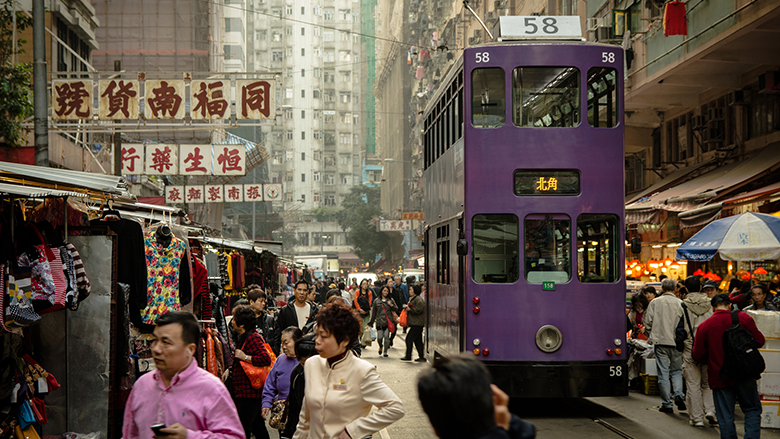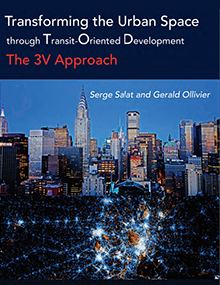What is Transit-Oriented Development?
Transit-oriented development (TOD) is a planning and design strategy that consists in promoting urban development that is compact, mixed-use, pedestrian- and bicycle-friendly, and closely integrated with mass transit by clustering jobs, housing, services, and amenities around public transport stations.
Based on the premise that economic growth, urban transport, and land use can be managed more efficiently if planned together, TOD has been successfully applied at a city scale in cities around the world including Stockholm, Copenhagen, Hong Kong SAR, Tokyo, and Singapore.
The benefits of Transit-Oriented Development
- Promoting higher densities and the concentration of jobs within relatively small areas, TOD creates agglomeration effects proven to boost a city’s competitiveness. Studies have shown that doubling job density, for instance, increases economic productivity by 5 to 10%.
- This concentration creates vibrant communities with high-quality public areas and shorter commuting distances—making cities more livable.
- Compact urban development and high-quality public transit also mutually reinforce each other: mass transit can support the large passenger flows that come with high density development, while the concentration of jobs and housing around stations helps make public transport financially viable.
- Proximity to mass transit improves access to TOD neighborhoods, boosting their attractiveness and increasing real estate value.
- Cities can capture a part of these increases in value and use it to finance additional transit improvements, affordable housing, and other initiatives that promote sustainable inclusive growth. In Hong Kong SAR, land value capture brought in about HK$140 billion in revenues between 1980 and 2005, and unlocked land for 600,000 public housing units.
- While TOD can drive up property prices and accelerate gentrification, this can be offset by allocating a significant portion of the new development to affordable housing. This type of inclusive TOD approach enhances access to job opportunities and services for residents at all income levels.
- By concentrating jobs, services, and housing within the catchment area of transit stations, TOD makes public transport a more attractive and efficient option, while reducing dependence on private cars and promoting shorter commutes. As a result, TOD typically translates into higher productivity and a smaller carbon footprint. In Stockholm, where development has generally followed the city’s main public transport corridors, the gross value added per capita grew 41% between 1993 and 2010, while GHG emissions per capita decreased by 35% over the same period.
- When located in areas that are less exposed to natural hazards, the TOD approach can enhance resilience to disaster risks by supporting high-density housing and activities in lower-risk zones.
A new report by the World Bank proposes the 3V Framework for TOD, which allows decision makers to better understand the linkages between connectivity, accessibility, place quality, and market potential values around a given station. Cities can then identify the type of development for which they are best-suited. The 3V Framework is applicable to large cities with extensive networks, and also smaller cities with only a few mass transit lines or a bus rapid transit system.
Where, when, and how to implement TOD: the 3V Framework
TOD principles cannot be applied uniformly across an entire city or transit network, since densities of jobs and people vary widely across the urban space. In fact, experience has shown that only about 15% of transit stations and their surrounding area can support very high density development.
To make informed decisions about TOD, research institutions and governments have developed a variety of methodologies that can help identify which station areas are good candidates for TOD, determine what level of density the area around a given station can absorb, and figure out what kind of development mix makes sense in a particular area, looking to strike the right balance between jobs, housing, and other amenities.
Building on these approaches, the report proposes a new framework for guiding TOD plans, by simultaneously assessing the “three values” (3V) of transit stations and surrounding areas:
- The node value describes the importance of a station in the public transit network based on passenger traffic, connections with other transport modes, and centrality within the network.
- The place value reflects the quality and attractiveness of the area around the station. Factors include the diversity of land use; the availability of essential services such as schools and healthcare; the proportion of everyday amenities that can be accessed by walking or cycling; pedestrian accessibility and also the size of urban blocks around the station.
- The market potential value refers to the unrealized market value of station areas. It is measured by looking at the major variables that can influence the demand for land (current and future number of jobs in the vicinity of the station, number of jobs accessible by transit within 30 minutes, current and future housing densities) as well as the supply (amount of developable land, possible changes in zoning policy, market vibrancy, etc.).
The report presents an approach to identify and address potential imbalances between node, place and market potential values to create new economic opportunities—for example, by improving the urban environment around a major transit hub, or by improving public transit service to a booming area. The tool provides a common framework of assessment for urban, transport, and economic planners, thereby facilitating conversations needed for better economic, land use, and transport integration.

